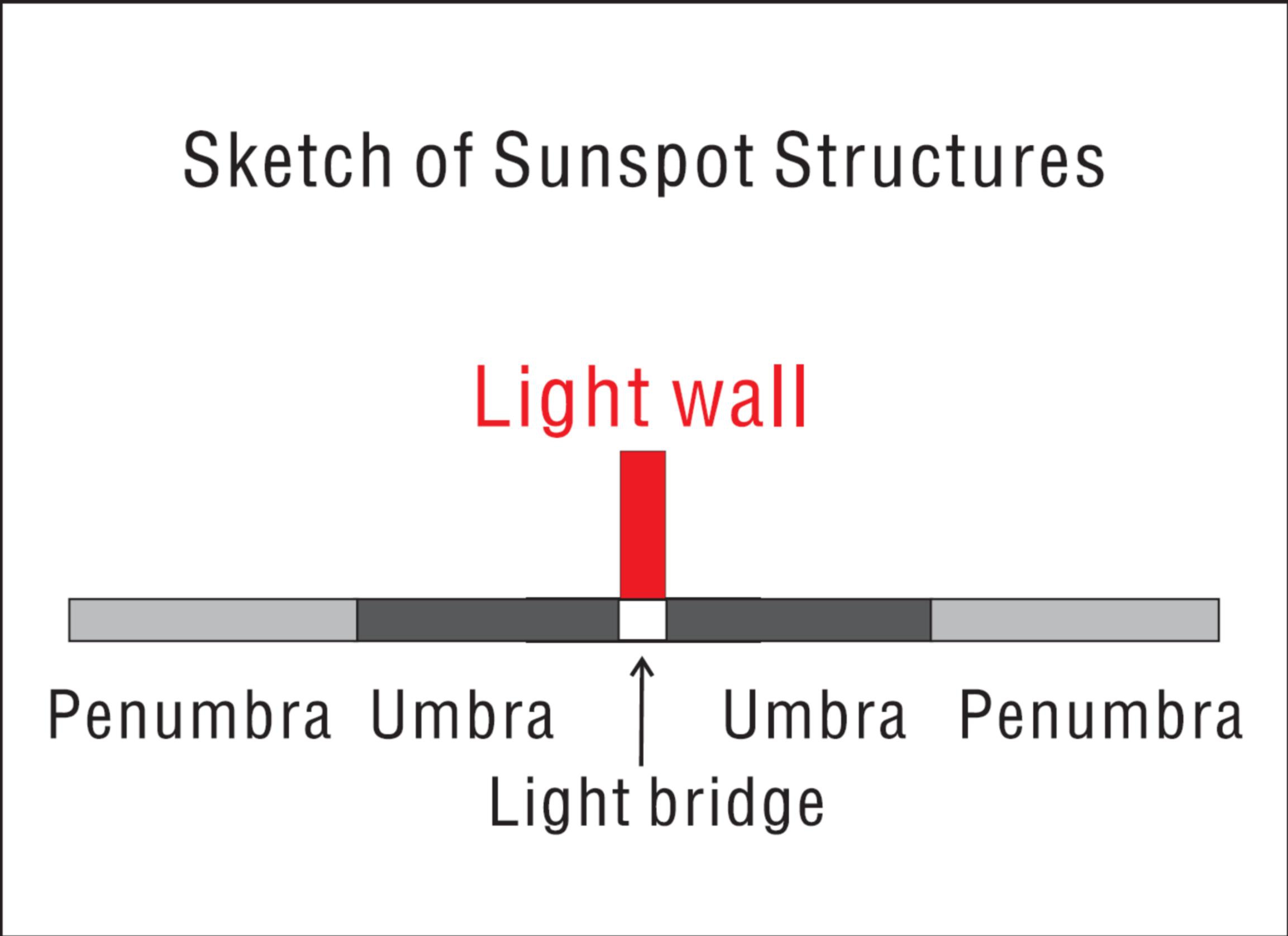Combined with the observations from the New Vacuum Solar Telescope (NVST), the Solar Dynamics Observatory (SDO), and the Interface Region Imaging Spectrograph (IRIS), Dr. Shuhong Yang et al. discover an ensemble of oscillating bright features rooted in the light bridge of NOAA 12192 and give this ensemble a new name, light wall. This study has been published in The Astrophysical Journal Letters (Yang, S. H., Zhang, J., Jiang, F. Y., & Xiang, Y. Y. 2015, ApJL, 804, L27).
NOAA 12192 which appeared in 2014 October is the largest active region since 1990 November. The NVST TiO 705.8 nm image shows that the main sunspot with the negative polarity consists of umbra, penumbra, and a distinct strong light bridge. In the IRIS 133 nm images, many bright structures are rooted in the light bridge, forming a light wall. The wall top is much brighter than the wall body, which is also visible in the SDO extreme ultraviolet lines. The mean deprojected height, amplitude, oscillation velocity, and the dominant period are determined to be 3.6 Mm, 0.9 Mm, 15.4 km/s, and 3.9 minutes, respectively. Yang et al. interpret the oscillations of the light wall as the leakage of p-modes from below the photosphere. The constant brightness enhancement of the wall top implies the existence of some kind of atmospheric heating, e.g., via the persistent small-scale reconnection or the magneto-acoustic waves.
According to the previous traditional knowledge, a mature sunspot is mainly consisted of umbra, penumbra, and light bridge. Our observations show that light wall is also a basic structure of sunspot, thus giving human beings a new understanding of the sunspot structures.
This work was supported by the National Natural Science Foundations of China (11203037), the Strategic Priority Research Program of the Chinese Academy of Sciences (XDB09000000), and the National Basic Research Program of China under grant 2011CB811403.














